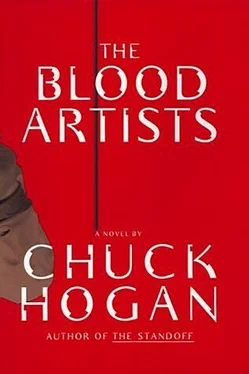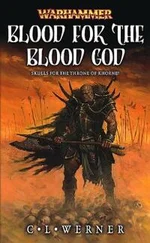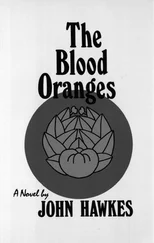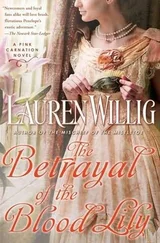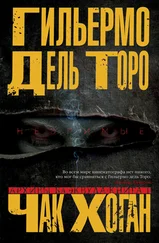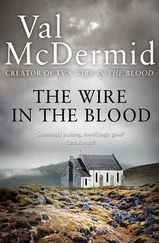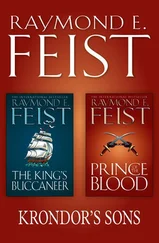“I can’t speak for Dr. Maryk,” I said, trying to move along. “You’ll have to ask him that yourself.”
I recalled The Disease Dilemma and its retelling of the Syn-Bank dedication at the White House four years before. Peter and I had both decided that we could not in good conscience profiteer from PeaMar23 and jointly signed over all patents and monetary claims to the BDC. It was perhaps the last thing we ever agreed upon. The revenue filled the bureau’s coffers, and in what was known as the “blood dividend” the Bureau for Disease Control became, while still functioning as an arm of the government, a self-supporting philanthropy not funded by tax dollars. The reason I had accepted the more decorative position of surgeon general was to ensure the integrity of the cash-rich BDC, and to preserve its political autonomy.
The news footage of the White House ceremony had shown me at the podium in the Rose Garden, holding forth on my vision of the future of medicine and disease control. Peter, seated in a chair behind me, folding and refolding the event’s program repeatedly in his gloved hands, his white hair glowing in the morning sun, declined to speak that day, and each day that followed. After Krebs was forced out, and I was appointed BDC director almost by acclamation, Peter, who could have had-anything he wanted, asked only to head the small Special Pathogens Section, with the proviso that he be well left alone.
Another question. “What can you tell us about Dr. Maryk? What is the ‘Special Pathogens Section’ and why is its work so secretive?”
“Special Path is a separate unit of the BDC,” I said, “dealing primarily in disease detective work involving unknown or emerging viruses. There is nothing secretive about that.”
“What would you say to those who claim you are putting your own personal agenda ahead of that of the BDC?”
“I would say, ‘What personal agenda?’ I want to see the world healthy. That’s all.”
“Where do you go from here, Dr. Pearse?” This particular accent was American. “What’s next?”
“Next?” A smile passed over my face. For some reason, the question tickled me, perhaps because of the bad taste left in my mouth from my performance on The Disease Dilemma. “Perhaps my resignation as surgeon general,” I said, as much for the charm of hearing myself say it aloud as anything else. I hadn’t given this any serious thought.
There was a stirring within the press corps. A buzz started throughout the room, and a camera light or two. came on, and questions began overlapping — all of which only further provoked me.
“The directorship also,” I said. “It may be time for me to get back to research. The Nobel has reminded me of why I got into medical science in the first place, before I got caught up in the parenting of PeaMar23. But only if I can first set up a smooth transition of power at the BDC.”
More commotion. I was entertained anyway, and oddly relieved; the announcement seemed to ease some of the pressure that had been building up inside of me that strange night and morning. It was as though my career fever had suddenly broken, and I was waking up, looking around the room with new eyes.
A signal tone sounded above the fray, and I looked off to the side of the dais. There was Peri, looking back at me, troubled by my candor. After some confusion as to whose tablet was going off, she opened her own and then held it for me to see. It could have been an inelegant ploy to get me off the stage, but something in her manner compelled me to stand. She met me at the step, her quick blue eyes anticipating my suspicion.
“It’s real,” she said. “Dr. Chiles.”
Reporters were surging toward us now, and to get away we withdrew through a pair of rear doors into the auditorium control room. Two women looked up disinterestedly from a computer station, then resumed their work. Pen turned her tablet around for me and held it, patiently, as I scanned the header.
It was indeed from Bobby Chiles, my deputy director at the bureau, forwarding an EPI-AID alert originating in a federal hospital in Orangeburg, South Carolina. The disease class caught my attention, listed as UNK, or Unknown.
I pulled the headset out of the tablet and dialed Bobby’s office in Atlanta. A window opened in the lower left corner of the screen and Bobby’s face, jowly and brown-skinned with a bush of rusty hair on top, appeared.
“Stephen,” he said. I saw the familiar black vinyl headrest of his chair behind him. His Georgia accent was strong in my ear, concerned. “No confirmation yet, but it looks like Plainville.”
I stared at the screen. The letters “UNK” stood out to me in bold blue pica. “South Carolina?”
Bobby read from a piece of paper. “A tuberculosis ward inside a hospital, burning fast. Eleven down already and we’re just now pulling up curbside.”
My pulse quickened. “No link to the last outbreak?”
“Nothing so far. Looks like the same deal as the others. Maryk’s out in Nevada, chasing down a low-grade hemorrhagic dengue. Protocol’s the only reason I’m bothering you. You are both still down as case agents on this thing. Just need your say-so before I call him in.”
I was nervous but, moreover, excited. “No,” I told him. “I’m taking this one, Bobby. I’m leaving here right now.”
Peri said over the top of the tablet, “You are?”
Bobby looked at me across thousands of miles, through the screen. “Come again?”
Peter and his Special Pathogens group had managed the original Plainville outbreak and each subsequent recurrence, shielding the operation from the public eye and, more important, containing the spread. But I remembered my claim on The Disease Dilemma broadcast, and thought that now would be a good time to begin living up to it.
“I can be there in a few hours,” I said. “They should have the pathogen properly typed by the time I arrive.”
I pulled down the headset and signed off, and Peri took back her tablet. “South Carolina?” she said.
“We’re heading back. You’ll need to clear my calendar for the next few days.”
“But the London speech...” She broke off, and did not persist. She must have sensed my determination. “I’ll extend all apologies,” she said.
Her smile brought back some of the night, and in her face I saw again that thing I had glimpsed under the chandelier, that had endeared her to me: Behind the learned cynicism of her profession lingered, like a smattering of character freckles just visible beneath camouflaging cream, the bright liveliness of a small-town girl.
Our shared silence was, rather than uncomfortable, thoughtful. Even encouraging.
“I panicked this morning,” she said. “It was stupid. I’m sorry I ran out.”
I smiled and shook my head. “Good morning,” I said.
I blushed. She didn’t.
“Good morning.”
Later we returned to the States together, conversing over meals in first class like any other couple, and the time passed pleasantly, but too quickly. After a small kiss inside the main terminal at Dulles International Airport, we departed for separate airplanes, hers back to Atlanta and mine on to South Carolina, that dread feeling in the pit of my stomach returning.
But for now she reached up to swipe a wayward lock of hair off my forehead, then nodded back at the door. “By the way,” she said. “Did you actually mean any of that in there?”
The medal weighed heavily in my hand like a gilded ashtray. “All of it, I think.”
The chief resident of the Orangeburg Federal Hospital waited anxiously to be introduced. “An honor, Dr. Pearse,” he said, and we shook gloved hands, under the ambulance entrance overhang. I was being sealed into a biohazard contact suit, its design much improved in the years since Africa, a lighter, saffron-colored, tear-resistant polymer jumper that was cooler inside and allowed greater mobility of the head and shoulders.
Читать дальше
